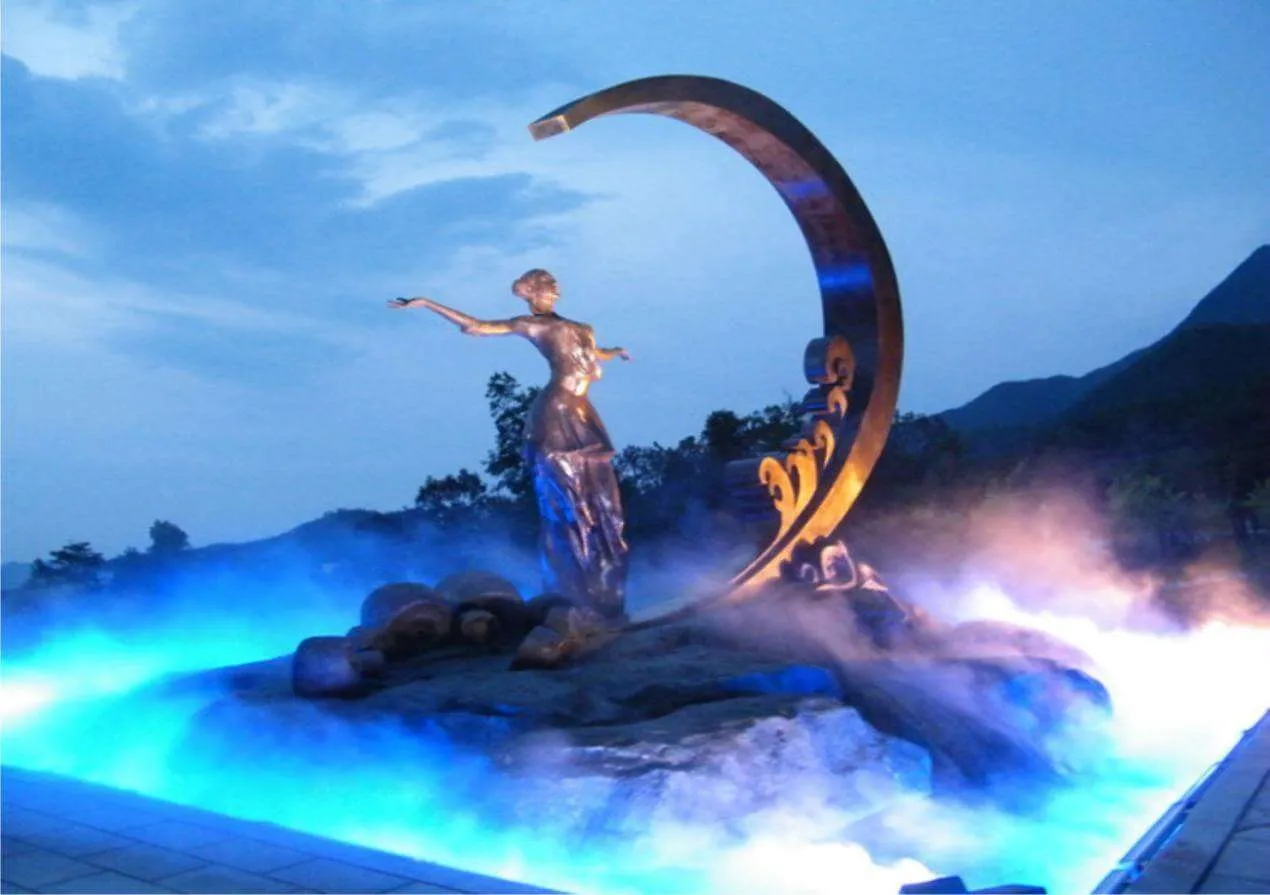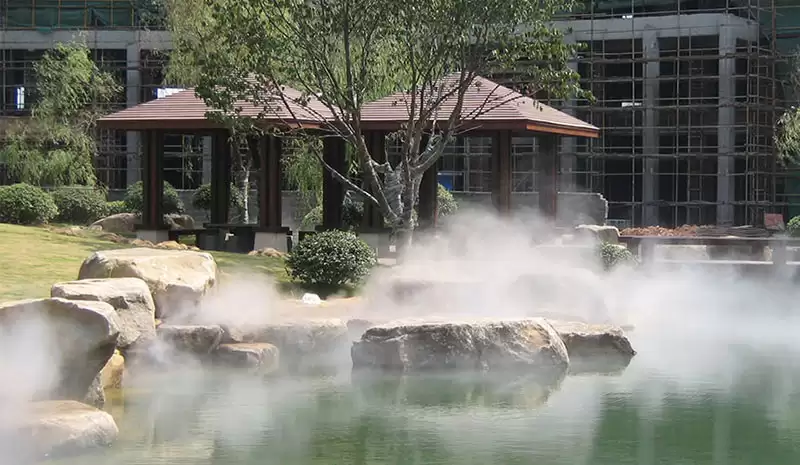Fog Fountain
Mist Water Fountain
A fog fountain is a type of water feature that creates a mist or fog-like effect by forcing water through tiny nozzles.
It is designed to produce a dense cloud of water vapour that resembles natural fog or mist. The water is typically pressurised and released as fine droplets into the air, creating a visually appealing and atmospheric effect.
Fog fountains are often used in indoor and outdoor settings for decorative purposes, as they can add a sense of enchantment and tranquillity to a space.
They are commonly found in gardens, parks, shopping malls, museums, and other public areas where aesthetics and ambiance are important.
The fog produced by the fountain is usually safe to walk through, as it is simply water vapour and not harmful chemicals or pollutants.

They are considered natural humidifiers that improve the quality of air by adding an adequate amount of moisture to dry habitats.
Let us delve into the science behind mist water fountain and explore the mechanism that often leaves drama and intrigue in the surroundings.
The Science Behind Fog Water Fountains

Understanding Fog Water Fountain
Naturally, fog is comprised of minute water droplets that are suspended in the air close to the ground.
It is witnessed when the temperature of the air is near/below its dew point, which results in the condensation of water vapour into droplets.
This phenomenon is now artificially recreated via fog water fountains using mist nozzles.
Mechanics of a fog fountain
Cool fog is atomized using compressed air and pressurised water. Pressurised water is injected into the discharge nozzle of the compressed air stream.
When compressed air is discharged from the nozzle, potential energy from the compressed air is converted into kinetic energy, which is transferred to the incoming water.
Fast moving gas-water mixtures are subjected to pressure fluctuations and turbulence, breaking the water flow into atomized droplets.
Finally, water mist, cold mist, fine mist, and micro mist are produced, just like clouds in high mountains.
Environmental Considerations and Sustainability
While mist water fountains provide magical visual effects, it is important to take its impact on the environment into consideration as well.
Manufacturers and designers strive to develop mist fountains that minimise water consumption and energy usage.
Below is the parameter of our common used mist nozzle
| Parameter | |||||
| Model No. | Pressure (kpa) | Water spray(m³/h) | Jet height (m) | Diameter (m) | Material |
| DN15 | 70-250 | 0.8-1.8 | 1.0-2.3 | 5.0-8.0 | SUS304 |
| DN20 | 100-300 | 1.0-2.3 | 2.0-6 | 5.0-8.0 | SUS304 |
| DN25 | 100-400 | 1.2-3.0 | 2.5-6 | 5.0-10 | SUS304 |
| DN50 | 100-400 | 1.5-3.5 | 2.5-7 | 5.0-10 | SUS304 |
Himalaya Music Fountain manufactured mist nozzles are made of high-grade stainless steel with strong corrosion resistance which are suitable for outdoor installations.
When water is forced through the mist nozzle under pressure, it exits as extremely small droplets.
These tiny droplets create a fog-like effect, especially when observed from a distance.
When sunlight passes through the mist, it refracts and disperses, creating a beautiful seven-colour rainbow effect like a fairyland.
Divided by means of usage, artificial fog falls into two types: Sceneric Fog and Cool Fog.
The former’s fog-particle is smaller than 10 um, which is just the same size as natural fog. It is mostly used for sceneric use, temperature lowering and moisture preservation.
The latter’s fog-particle ranges from 30 um to 50um, mostly used for lowering temperature, increasing humidity and medicine spraying.
Functions of artificial fog
Heat protection and cooling
Dust proof
Landscape moisturising
Scenery-making
It’s widely used in gardens, parks and architectures due to its alluring fairytale-like visuals.

Deodorization
Anions also called “Air Vitamin”, will be produced at large scales in artificial fog, which not only beautifies the environment, but also contributes to people’s health.
Design considerations for Fog Water Fountain

Designing mist fountain requires precise planning and consideration to ensure that it fits the surrounding and creates a charming ambiance of utmost safety.
Let us explore some key factors that goes into mist water fountain designing:
Evaluating available space
Safety and maintenance considerations
Integrating other design elements
Common Combinations With Fog Fountain
Fog Fountain and Fountain
Fog Fountain and Water Curtain
Fog Fountain and Water Jets
Fog Fountain and Fountain Lighting
Fog Fountain and Music Control
Integrating a fog fountain with a music control system allows adjustment of the fog spray pattern according to the rhythm and beats of the music, creating a harmonious audiovisual experience.
These combinations can be flexibly tailored and innovated according to personal preferences and design requirements, resulting in unique and awe-inspiring water scenery.


FAQs (Frequently Asked Questions)
It is a fountain that produces a fine mist or fog like effect by breaking down water into tiny droplets that creates an enhancing ambiance.
Fog fountains use high pressure systems to convert water into mist. LED lights can be used to enhance the display at night.
Yes! With proper ventilation and humidity monitors, fog fountains are safe indoor installations.
Fog fountains must use clean water and operate efficiently to have minimal environmental impact.
Yes! When it comes to fog fountains, an in depth site analysis is required to ensure that even though people walk through the fog they are not leading up to a pitfall. For optimal performance of mist fountain, proper setup, and safe operation, it is best to seek professional help.


